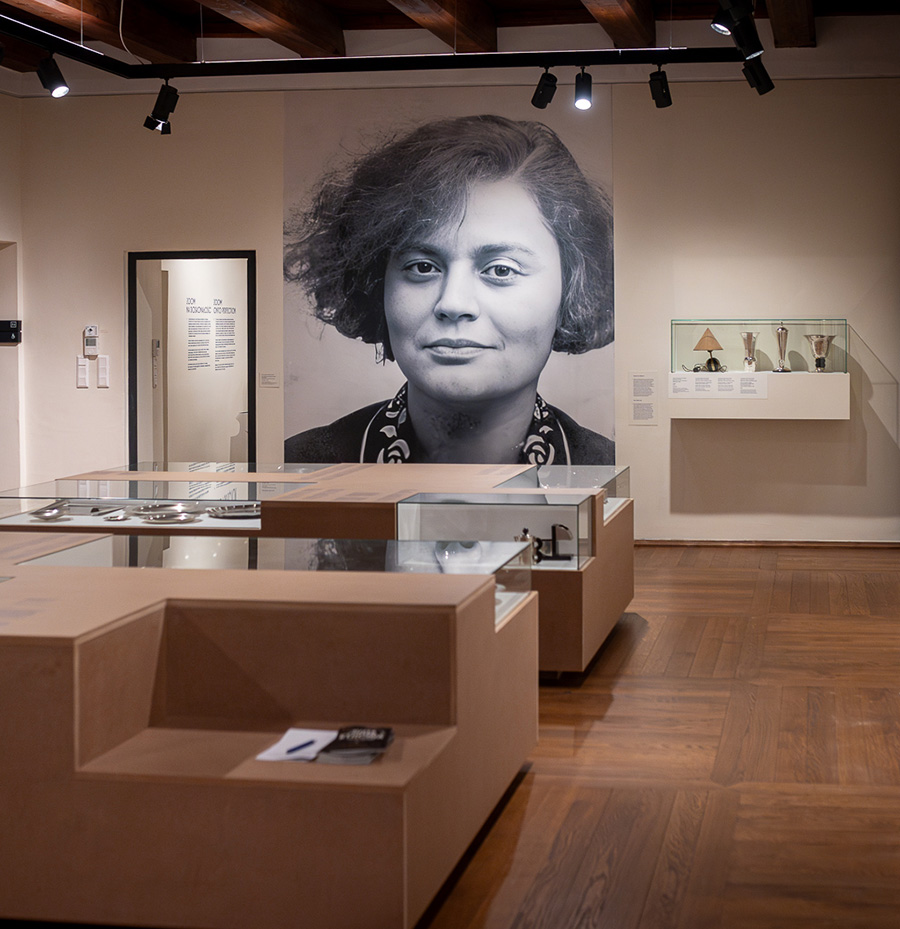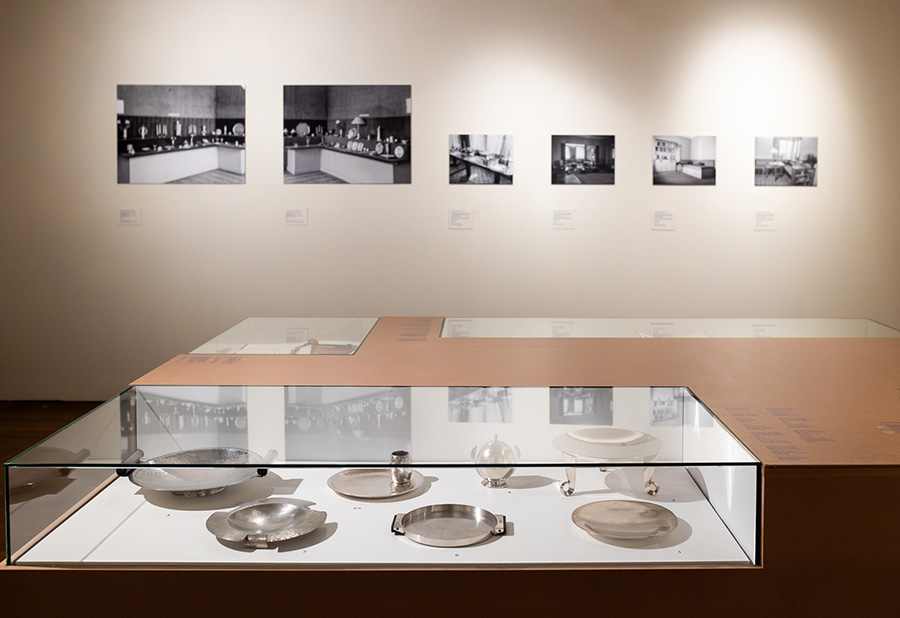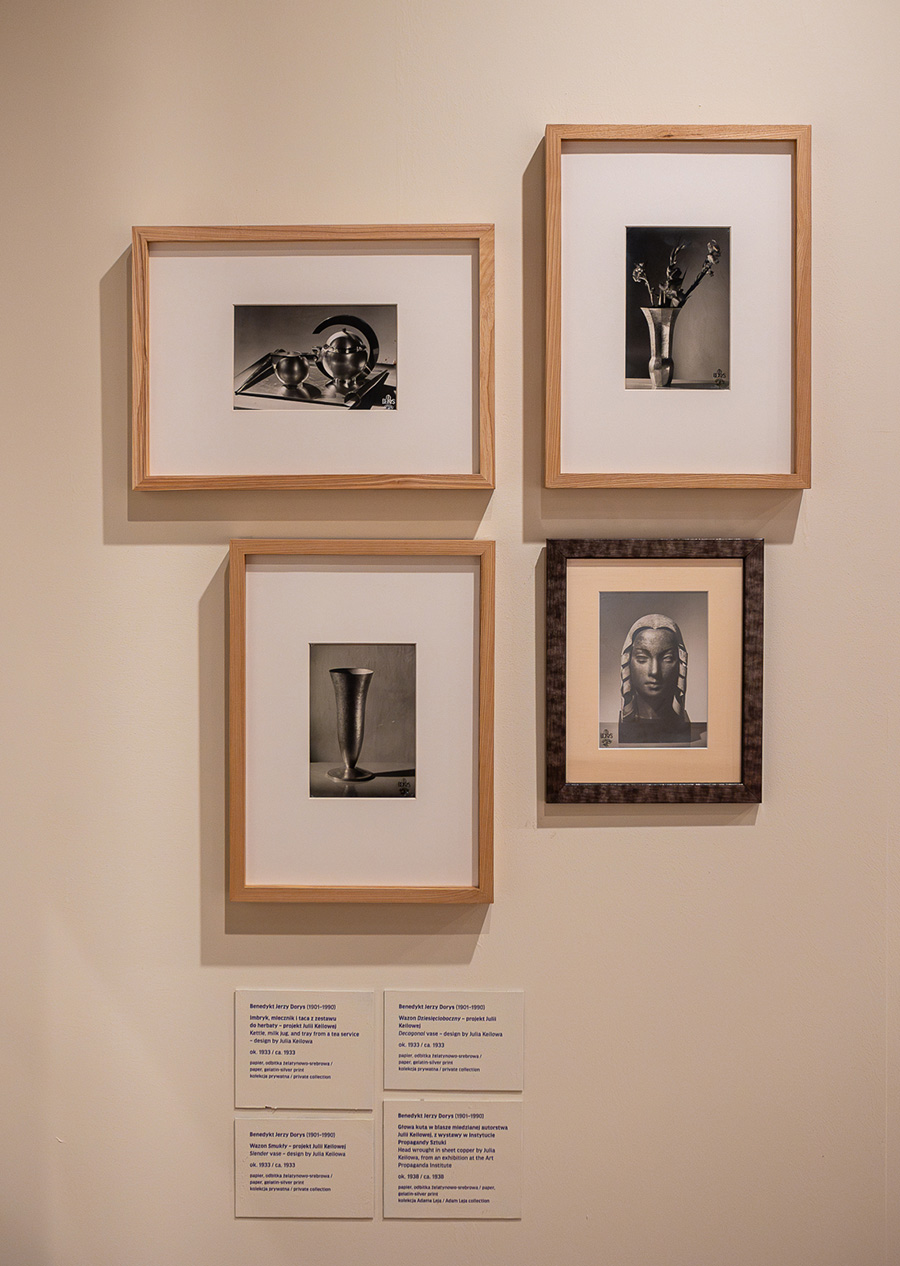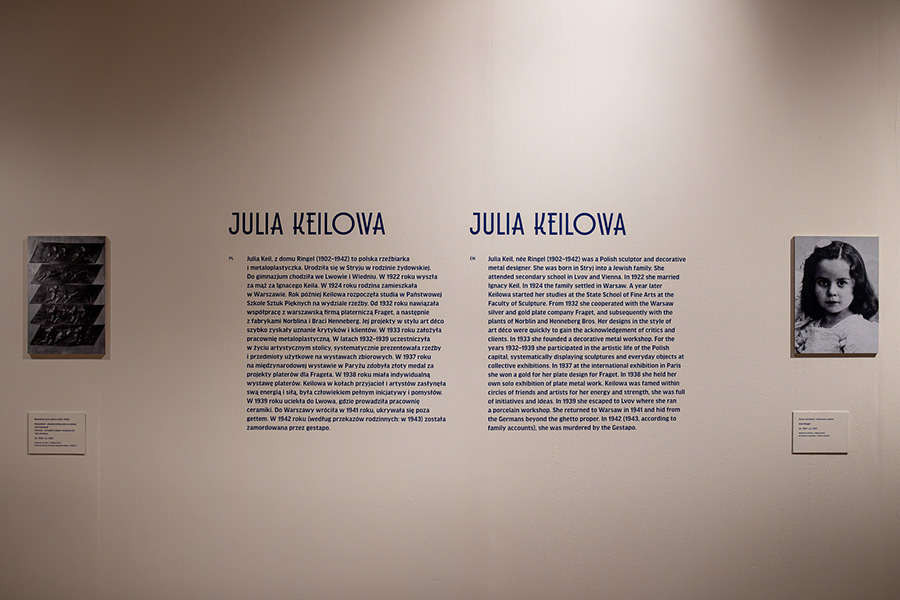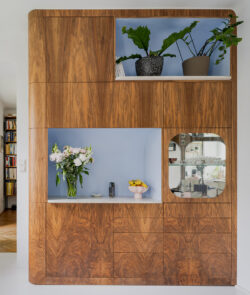Keilowa
Exhibition design 2024 | “Julia Keilowa. Designer” temporary exhibition at the Museum of Warsaw | Team: lead designer Jan Strumiłło, assistant designers Kacper Borek, Cezary Nagórski, graphic design by Jakub Jezierski with assistant Nina Chodaczek | The exhibition opened on March 21st, 2024 and is due to close on September 1st, 2024 in the Museum of Warsaw at Rynek Starego Miasta 28 | Photos courtesy of Museum of Warsaw | Photography by Tomek Kaczor
Our concept is based on a number of key choices. They constitute a strong visual identity present throughout the maze of diverse medieval rooms occupied by the exhibition.
From the outset we knew for certain that the nature and quality of the presented collection required light-coloured walls in order to maximise ambient light. The vast majority of presented objects are small, very valuable, made of precious metals and thus had to be protected by glass covers.
We proposed the flexible typology of a massive table with integrated glazed display cases repeated with various alterations in all rooms. Each display case occupies one vertex of the cuboid table. With four available vertices per table we could playfully take advantage of the many cover sizes. A number of unoccupied vertices were kept void thus becoming simple seating. The tables appear to levitate above the floor thanks to the deeply recessed skirting. We had object tags printed directly onto the tables’ top surfaces, perfectly flush with the glazing.
The subtle grain pattern of raw MDF boards and their warm colour provide contrast for the curved forms shaped by Julia Keilowa in polished metals. MDF was also used as backboard for photographic prints. Some of the objects are presented in wall-hung cases, painted the same cream-white as the walls. Their proportions turned out to be pleasantly, if unexpectedly, related to the heavy timber beams supporting ceilings over some of the rooms. We attempted to blend the object tags with their background by printing them out on thin sheets of steel painted with the exact same paint as the walls.
Strategically placed oversize wallpaper portraits of Julia Keilowa and her fellow designers allowed us to direct attention towards the people behind the products on display.
Providing room for the educational programme accompanying the exhibition was perhaps the most challenging and rewarding piece of our work. Simple exercises in cutting, bending and gluing paper awaiting active visitors are modelled on Julia’s own artistic research techniques. The workshop table sets the stage for these while remaining part of the exhibition table family.
